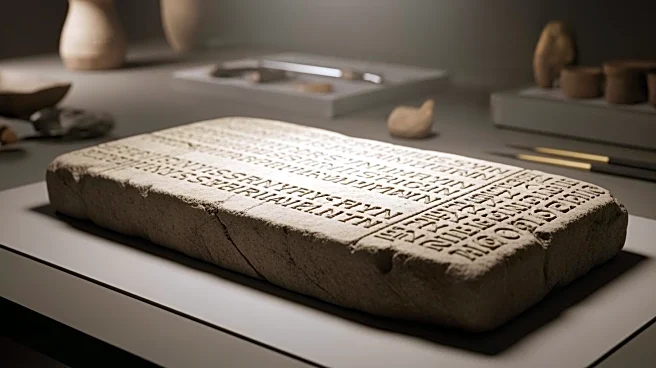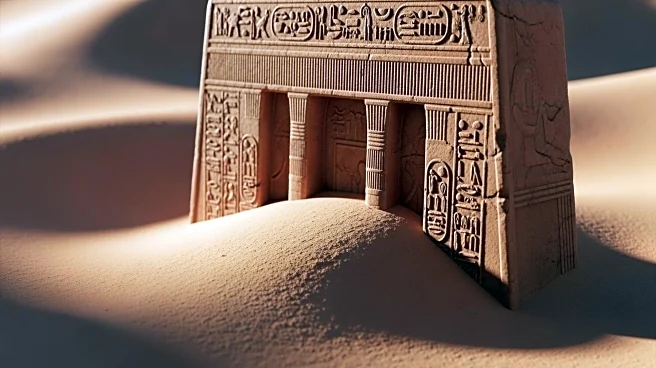What's Happening?
Archaeologists in Jerusalem have uncovered a 2,700-year-old Assyrian inscription that may shed light on events described in the Old Testament. The pottery fragment, part of a seal used to authenticate official documents, was found in a drainage canal
at Temple Mount in Jerusalem's Old City. This discovery marks the first evidence of relations between the Assyrian Empire and the Kingdom of Judah in the city. The shard, inscribed with Akkadian cuneiform, was traced to the Tigris basin region, home to several Assyrian hubs. Researchers deciphered the text, revealing a complaint from Assyrian officials about a delayed tax payment by Judah, due in the 11th month of the Hebrew calendar. This aligns with Biblical accounts of Judah's King Hezekiah's interactions with Assyrian King Sennacherib, who imposed a heavy tribute on Judah.
Why It's Important?
The discovery of this ancient inscription is significant as it provides tangible evidence of historical events that are also described in the Bible. It highlights the complex political relations between the Kingdom of Judah and the Assyrian Empire, one of the ancient world's superpowers. This find contributes to our understanding of the geopolitical dynamics of the era and offers insights into the historical context of Biblical narratives. It underscores the importance of archaeological research in bridging gaps between historical records and religious texts, enhancing our comprehension of ancient civilizations and their interactions.
What's Next?
The discovery may prompt further archaeological investigations in Jerusalem and surrounding areas to uncover more artifacts that could provide additional insights into the historical relations between Judah and Assyria. Scholars and historians might explore the implications of this find on the interpretation of Biblical texts, potentially leading to new understandings of ancient Near Eastern history. The artifact could also inspire discussions on the preservation and study of cultural heritage, emphasizing the role of archaeology in connecting modern society with its historical roots.
Beyond the Headlines
This discovery raises questions about the accuracy and historical basis of Biblical narratives, offering a unique opportunity to explore the intersection of history and religion. It may lead to debates on the interpretation of religious texts in light of archaeological evidence, influencing theological studies and historical research. The find also highlights the importance of preserving archaeological sites, as they hold the potential to reveal crucial information about past civilizations and their cultural, political, and economic interactions.














